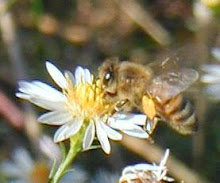Many scientists believe that by studying embryonic development in living animals, they can learn about the animal's long extinct ancestors. An example of this can be found in the document 15 EVOLUTIONARY GEMS: A resource from Nature for those wishing to spread awareness of evidence for evolution by natural selection. by Henry Gee, Rory Howlett and Philip Campbell. This document was published by the prestigious scientific journal Nature, in January 2009. In this document, the authors say that studying the development of the neural crest in embryos of living organisms "casts light on the evolution of structures in the heads and necks of animals long extinct."
New techniques have allowed researchers to label and follow individual cells as embryos develop. They have revealed the boundaries of the bone derived from the neural crest, down to the single-cell level, in the neck and shoulders. Tissue derived from the neural crest anchors the head onto the front lining of the shoulder girdle, whereas the skeleton forming the back of the neck and shoulder grows from a deeper layer of tissue called the mesoderm.
Such detailed mapping, in living animals, casts light on the evolution of structures in the heads and necks of animals long extinct, even without fossilized soft tissue such as skin and muscle. Skeletal similarities that result from a shared evolutionary history can be identified from muscle attachments. This allows the tracing of, for example, the location of the major shoulder bone of extinct land vertebrate ancestors, the cleithrum. This bone seems to survive as part of the shoulder blade (scapula) in living mammals.
...
Matsuoka's study shows how a detailed analysis of the morphology of living animals, informed by evolutionary thinking, helps researchers to interpret fossilized and now-extinct forms.
This excerpt explains that because of the shared evolutionary history of modern animals and their fossilized ancestors, scientists can tell which fossilized bones had developed from neural crest cells.
If this is true and the embryonic development of living animals reflects the embryonic development of their long extinct ancestors, then certain evidence from embryology provides evidence that the animal phyla did not descend from a multicellular common ancestor.
According to the theory of evolution by natural selection, as organism evolved they developed more complex features. Therefore the oldest ancestors will be much simpler than modern animals. The embryos of the simple ancestors would not develop the complex features of modern animals. Therefore the embryonic development of an organism and its ancestors should start out the same but then diverge at the point in development where features in the modern animal but absent in the ancestor cause changes in the development of the embryo. But if the embryos of two animals start out embryonic development differently, then the two animals should not have shared a multicellular common ancestor.
In the first stages of embryogenesis in multicellular animals, the fertilized egg goes through a series of cleavages to form a hollow ball of cells called a blastula, then the cells migrate to form a multi-layered gastrula. However, vertebrates and insects don't form a gastrula in the same way. The pattern of migration of their cells from the blastula to the gastrula is different. In fact, vertebrate and insect embryos don't even form a blastula in the same way. The fertilized egg in vertebrates and insects go through a different pattern of cleavage while forming blastulas. In vertebrates and insects, starting at the very beginning of embryogenesis their embryos form differently.
If it is true that embryonic development of an organism reflects the embryonic development of the organism's ancestors, as indicated by the excerpt from Nature above, then the difference in blastulation and gastrulation in vertebrates and insects shows that the embryos of their earliest multicellular ancestors developed differently and therefore could not have been the same organism. But it is not just vertebrates and insects in which the initial stages of embryogenesis are different. Most of the animal phyla also have unique patterns of early embryogenesis. This is evidence that the animal phyla did not share a common multicellular ancestor.
This conclusion is consistent with the fossil evidence showing that the animal phyla that first appeared in the Cambrian explosion did not have ancestors.
The absence of common ancestry falsifies evolution by natural selection but is predicted by intelligent design.
The study of regulatory genes that control embryonic development also supports this view. Homologus genes that control the embryonic development of analogous structures is better explained by intelligent design than by evolution by natural selection.
Copyright © 2014 by ncu9nc All rights reserved. Texts quoted from other sources are Copyright © by their owners.



